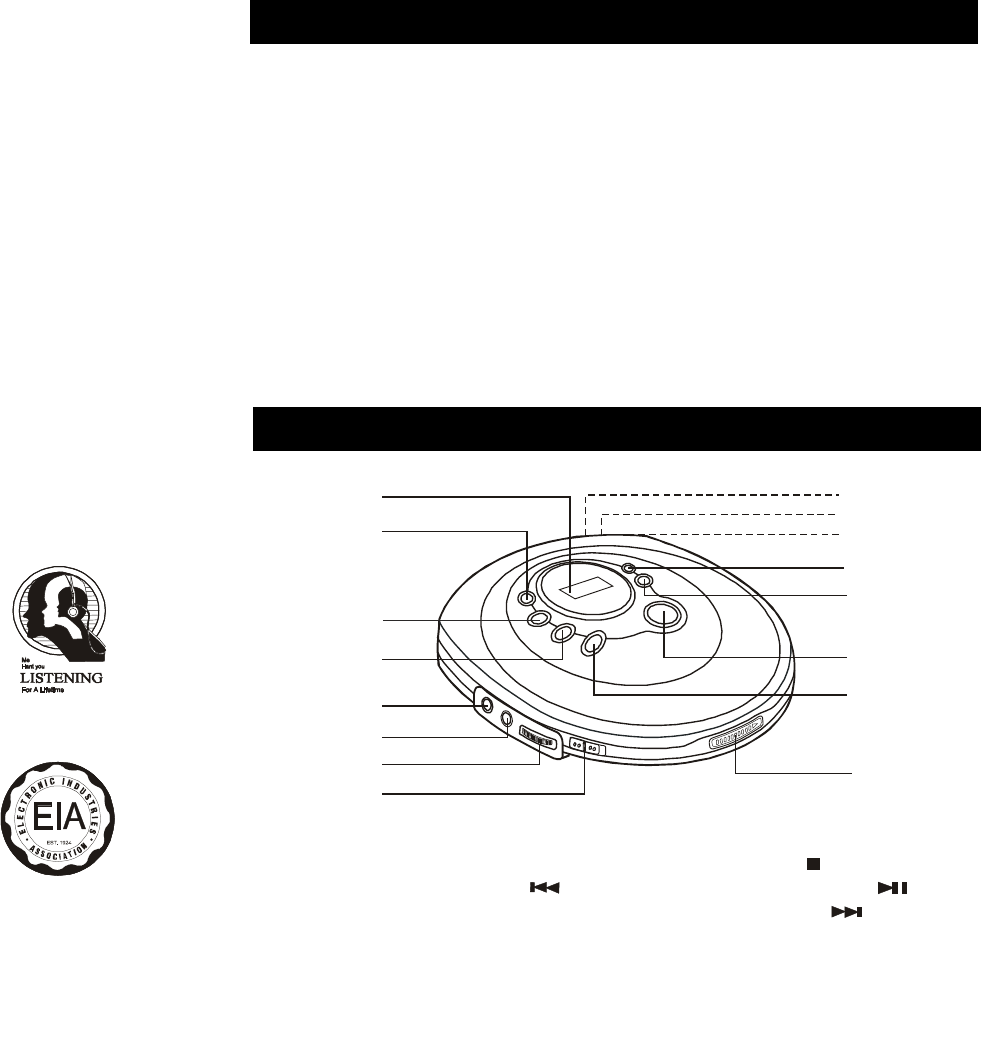
Dear Customer:
Selecting fine audio equipment such as the unit you've just purchased is only the star of your
musical enjoyment . Now it's time to consider how your can maximize the fun and excitement
your equipment offers. This manufacturer and the Electronic industries Association's Consumer
Electronics Group want you to get the most out of your equipment by playing it at a safe level. One
that lets the sound come through loud and clear without annoying blaring or distortion - and most
importantly, without affecting your sensitive hearing.
Sound can be deceiving. Over time your hearing "comfort level" adapts to higher volumes of sound.
So what sounds "normal" can actually be loud and harmful to your hearing. Guard against this by
setting your equipment at a safe level BEFORE your hearing adapts.
To establish a safe level:
• Start your volume control at a low setting.
• Slowly increase the sound until you can hear it comfortably and clearly, and without
distortion.
Once you have established a comfortable sound level:
• Set the dial and leave it there.
Taking a minute to do this now will help to prevent hearing damage or loss in the future.
After all, we want you listening for a lifetime.
We Want You Listening For A Lifetime
Used wisely, your new sound equipment will provide a lifetime of fun and enjoyment.
Since hearing damage from loud noise is often undetectable until it is too late, this manufacturer
and the Electronic industries Association's Consumer Electronics Group recommend you avoid
prolonged exposure to excessive noise. This list of sound levels is included for your protection.
Decibel
Level Example
30 Quiet Library, soft whispers
40 Living room, refrigerator, bedroom away from traffic
50 Light traffic, normal conversation, quiet office
60 Air conditioner at 20 feet, sewing machine
70 Vacuum cleaner, hair dryer, noisy restaurant
80 Average city traffic, garbage disposals, alarm clock at two feet
THE FOLLOWING NOISES CAN BE DANGEROUS UNDER CONSTANT EXPOSURE:
90 Subway, motorcycle, truck traffic, lawn mower
100 Garbage truck, chain saw, pneumatic drill
120 Rock band concert in front of speakers, thunderclap
140 Gunshot blast, jet engine
180 Rocket launching pad
Information courtesy of the Deafness Research Foundation.
INDUSTRY CANADA NOTICE
Operation is subject to the following two conditions:
(1) This device may not cause interference, and
(2) This device must accept any interference, including interference that may cause undesired
operation of the device.
EN-2
COMPLIANCE WITH FCC REGULATIONS
This equipment has been tested and found to comply with the limits for a Class B digital
device, pursuant to Part 15 of the FCC Rules. These limits are designed to provide
reasonable protection against harmful interference in a residential installation. This
equipment generates, uses and can radiate radio frequency energy and, if not installed and
used in accordance with the instructions, may cause harmful interference will not occur in a
particular installation. If this equipment does cause harmful interference to radio or television
reception, which can be determined by turning the equipment off and on, the user is
encouraged to try to correct the interference by one or more of the following measures:
• Reorientate or relocate the receiving antenna.
• Increase the separation between the equipment and receiver.
• Connect the equipment into an outlet on a circuit different from that to which
• the receiver is connected.
• Consult the dealer or an experienced radio technician for help.
1
2
3
4
5
6
8
7
9
10
11
12
13
14
15
16
1. LCD DISPLAY
2. MODE BUTTON
3. SKIP DOWN BUTTON
4. RANDOM BUTTON
5. LINE OUT SOCKET
6. PHONES SOCKET
7. VOLUME CONTROL
8. DBBS SWITCH
EN-3
LOCATION OF
CONTROLS
9. DOOR OPEN SLIDE SWITCH
10. STOP BUTTON
11. PLAY/PAUSE BUTTON
12. SKIP UP BUTTON
13. PROG. BUTTON
14. RECHARGE INDICATOR
15. RECHARGE SWITCH
16. DC 4.5V INPUT SOCKET
WARNING









